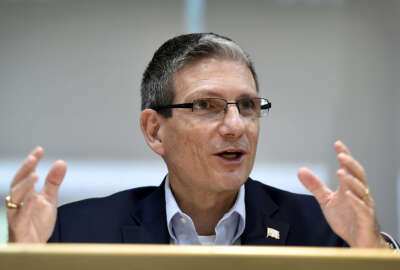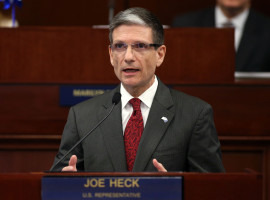‘Where’s the disconnect?’ National commission grapples with agencies’ workforce woes
As agencies attempt to get creative to address skills gaps and other vacancies, the Commission on Military, National and Public Service heard stories from agency...
After $2 billion in budget and workforce cuts over the last eight years, the IRS is attempting to, in the words of its commissioner, “paint the barn,” when it comes to the agency’s human capital.
Just 770 employees in an IRS workforce of 80,000 are under the age of 30, Jerry Leach, the agency’s director of human capital analytics and technology, said last week at a panel discussion produced by Government Executive. About 230 employees are under the age of 25.
“If we bring these folks in, they’re used to online learning. They’re used to doing things remotely,” Leach said. “If we don’t modernize the way we support our employees now, they’re going to come in and say, ‘Why am I doing this? You can do this so much better and faster.’ They’ll go find those other opportunities.”
Meanwhile, about 24-to-25% of the IRS workforce is eligible to retire, he added.
The IRS isn’t alone.
The U.S. Agency for International Development has lost half of its HR processing staff over the last four years due to attrition and a recent hiring freeze, according to Lindsey Willis, chief of USAID’s HR systems management division. It lost one-third of its overall HR workforce over the last two years.
These stories come as the Commission on Military, National and Public Service in recent weeks heard stories of agencies who are running into the boundaries of their own personnel and human capital systems. In two hearings focused on the “public service” portion of its mission, the commission heard from a variety panelists who detailed longstanding, familiar challenges with today’s decades-old civil service system.
It takes too long to hire. USAJOBS.gov is too frustrating. Veterans preference, often the unspoken elephant in the room for HR practitioners, could use some work.
Personnel systems for most federal employees are too inflexible and aren’t yet designed to meet the needs of a workforce that’s craving more mobility.
Those frustrations have piled up and contribute to a federal workforce where just 6-to-7% of federal employees are under the age of 30, and nearly 30% of the workforce will be eligible to retire in the next five years.
More than halfway through the first hearing on federal hiring challenges, Debra Wada, the commission’s vice chair on military service, stopped the panelists.
“We heard from a lot of young Americans who have an interest because they do want to do something that solves a problem. They see the problems this country is facing,” she said. “And yet they come to USAJOBS, or they go to whatever agency is closest to them. They try to navigate a system that they don’t understand, that is not responsive [and] is not transparent. From what I’m hearing, we’ve done these fixes where we think we’ve made progress. But I’m trying to figure out, where’s the disconnect? Where should we focus our attention to fix this disconnect between the where the general public believes we are and where we as institutions believe we are?”
Absent sweeping civil service modernization or an overhaul of the hiring, agencies are attempting to reshape the kind of work their existing employees do — and retrain them for new activities.
USAID is looking to reskill its dwindling HR workforce.
“We are using technology to fill the gap as much as possible, so we can be more efficient and focus on the high-value work,” Willis said. “We’re not going to be able to bring back that 50% of our transactional staff, nor should we. We want to focus on being able to attract and retain staff.”
And as the Treasury Department continues its own HR transformation, the IRS is developing career paths and specific HR academies that will train its employees on the new IT systems that are being deployed at the agency, Leach said. A new talent development platform that will walk employees through their career possibilities is also under development.
When it comes to the public service portion of its mission, it’s unclear what exactly the Commission on Military, National and Public Service might recommend in its final report, due next March.
The commission’s interim report suggests giving agencies better tools and authorities to recruit and hire interns and fellows directly into permanent positions. It also proposed a more flexible benefits and retirement package as a method to more easily transfer talent in and out of the public sector.
“We have to lean into a future of work. We can’t keep relying on what has worked in the past,” Elizabeth Kolmstetter, NASA’s director of talent strategy and engagement, said. “Employees are looking for experiences, not a job and not even a ladder. That could be diagonal or down or over or sideways. We have to have porous borders with private sector, academia, non-profits [and] local and state government.”
The panelists debated these recommendations and others, including a change to veterans recruitment appointment. The commission suggested, for example, whether government could give veterans 10 years to use VRA, rather the current three years. It also considered only allowing veterans to use preference to initially obtain a job within the federal government — not for promotions or transfers.
Other ideas under consideration are described in the commission’s memo here.
Copyright © 2025 Federal News Network. All rights reserved. This website is not intended for users located within the European Economic Area.
Nicole Ogrysko is a reporter for Federal News Network focusing on the federal workforce and federal pay and benefits.
Follow @nogryskoWFED





